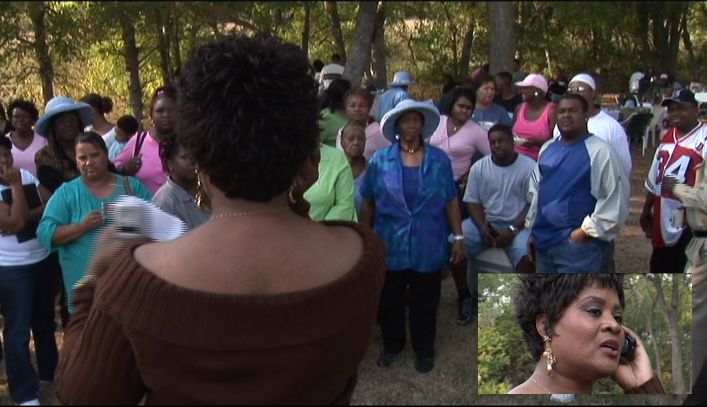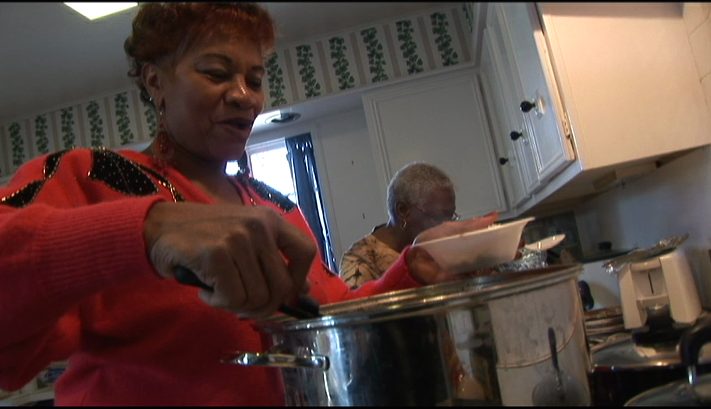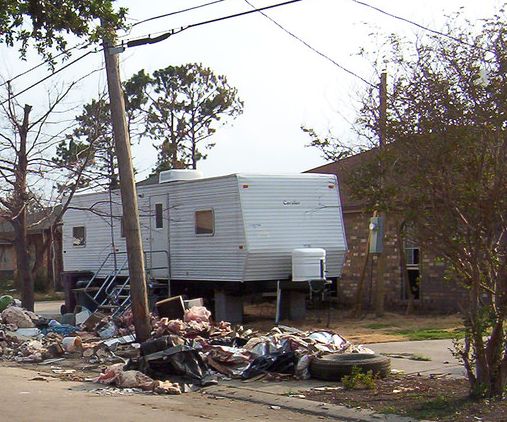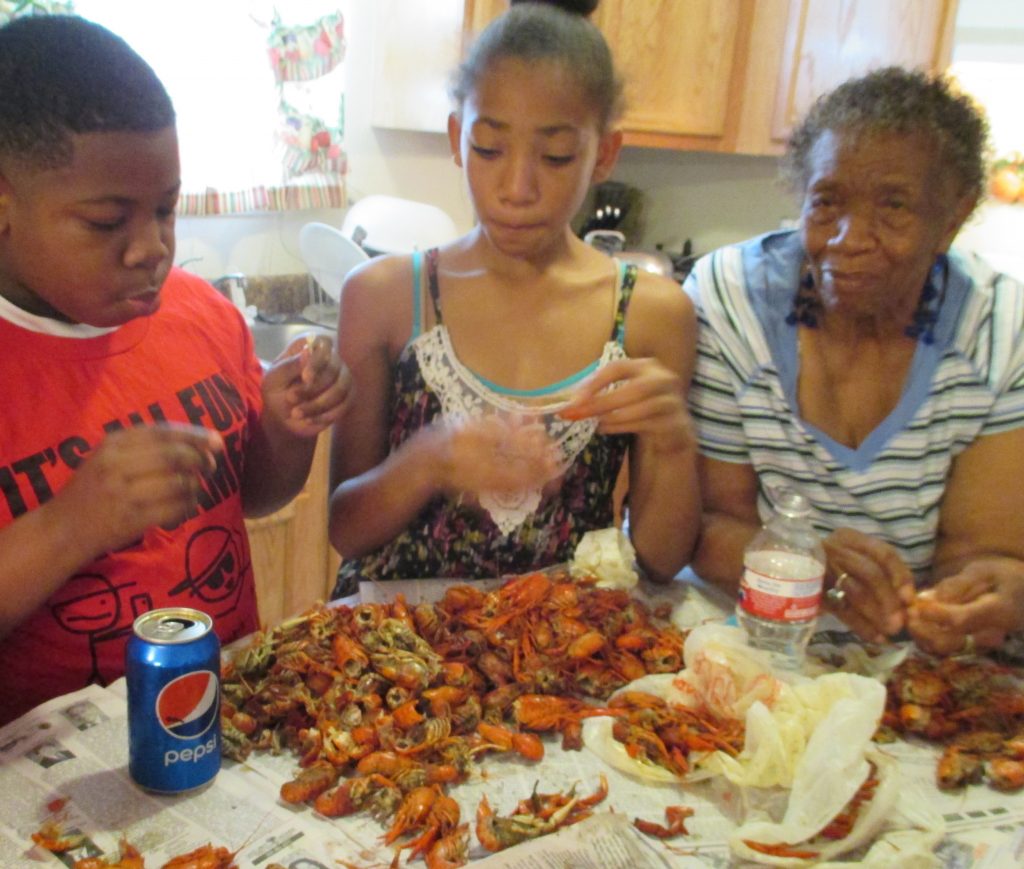Roux and Resilience: Eleven Years After Hurricane Katrina
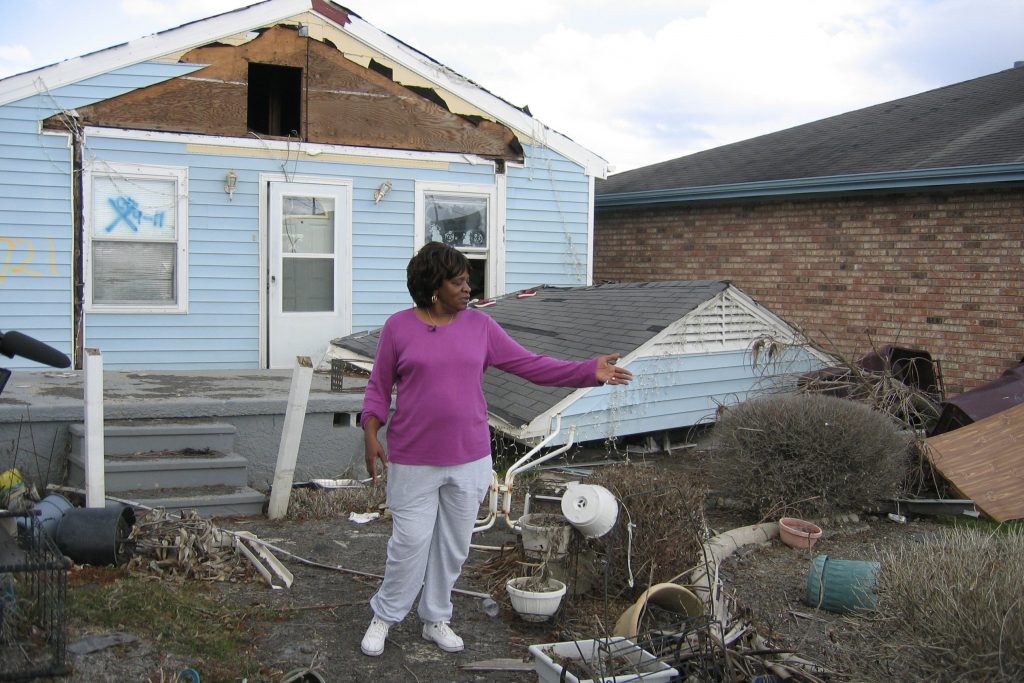
When the front door of Connie and Terry Tipado’s home near Dallas, Texas, opened in October 2005, the first thing I noticed was the smell of something delicious cooking. I knew that fragrance—the smoky, nutty aroma of a long-stirred Southern roux. As I entered into Connie’s warm welcome, the smell of gumbo wrapped around me like a reassuring shawl.
Altogether, there were 155 members of the Johnson-Fernandez family who had evacuated to the Dallas area ahead of Hurricane Katrina. Connie, who is part of this big family, had beckoned them, telling everyone that her quiet place on a large piece of land offered refuge. That first night before the storm came ashore on August 29, 48 people slept in her home; the rest found hotels or stayed with Connie’s friends. In the following days, TV reports shocked the nation with the extent of the flooding in New Orleans, Louisiana. The storm’s worst lashing effectively leveled St. Bernard Parish just southeast of the city’s boundary, which was home to 67,229 people—including Connie’s family.
When I saw these same reports from my home in Colorado, I wanted to help. I started with a hunch—that the internal support network of large Afro-Creole families I had known in Martinique, the site of my previous fieldwork, was similar to that of African-Americans who lived in the New Orleans area. I plunged myself into the scholarship on disaster impacts. Surprisingly little in these studies related to culture, and almost nothing had to do with large families.
I applied for a “rapid” National Science Foundation grant, and in late September was awarded funding to support an ethnographic film project. Emmy-winning filmmaker Ginny Martin became my collaborator, and we began looking for a large black family impacted by Katrina. In mid-October we got lucky: A Dallas connection of ours knew Connie and Terry. Their home in a town east of Dallas became our field site for the rest of 2005.
Connie had grown up on the Louisiana bayou, and in the 20 years since she had moved to the Dallas area, she remained a loyal daughter, sister, niece, aunt, and cousin to her more than 300 relatives who lived in lower St. Bernard Parish. With heroic efforts that would consume her every day for months following the hurricane, she found housing, located supplies, and negotiated official paperwork in order to secure compensation for her family members. Connie also made it possible for the family to replicate two of their cultural habits while living in Texas—cooking for the family and gathering to share meals. She turned over her kitchen to the bayou cooks; her porch and backyard became the venue for the group’s weekly gatherings.
I didn’t know it at the time, but observing Connie’s displaced family in an unfamiliar setting would provide me with a comparative framework for understanding the family’s sources of comfort and optimism, even in the midst of crisis. I saw how the group organized itself. I saw how cooking and gathering in large numbers connected the generations. And I saw how the family found ways to help themselves and be resourceful, a capacity that Connie’s support made possible. My fieldwork in Dallas offered a rare glimpse into what normal bayou life looked like before Hurricane Katrina struck. This knowledge later turned out to be crucial in helping me recognize the severe cultural deprivation the family experienced after they returned home.
On that first day we visited Connie’s home, she shepherded Ginny and me through crowded rooms abuzz with four generations of family. In the kitchen, a dozen women worked in what was clearly their comfort zone. Four elder women presided over the main dishes: gumbo, jambalaya, red beans, and fried chicken. Laughter rolled easily and seemed to banish worry.
Katie Williams—Connie’s aunt, godmother, and an acknowledged gumbo queen of the family—stirred her concoction, brown as the swamp where the recipe was born. Katie had loved to cook since she was a little girl growing up with her eight siblings in the village of Verret in lower St. Bernard Parish. Katie’s mother was a housekeeper and cook for a prosperous white family that lived nearby, and her father supported the family by trapping mink, raccoon, and muskrat. He’d skin them, dry and cure their pelts, and sell the pelts to the markets in the city. He taught his children to crab and shrimp and enjoy the bounty of the bayou.
Katie became known for her skills in the kitchen, and after finishing high school, she got a job as a cook in the parish jail. It didn’t take long for the sheriff, a neighbor, to promote her to sheriff’s deputy, a job she held for 18 years until she had to have her leg amputated and replaced by a prosthetic limb. But her firm faith, big family, and pleasure in cooking carried her through. She raised other children in addition to five of her own. Her home and porch were the family gathering place after Sunday services. During the holidays, she lit up her house like a beacon. As Connie described it, “Every year, you can see her house from the highway!”
But I learned all of this later, during my research into the family’s history and bayou roots. At this first meeting, it was all about food. The essential dark-chocolate color and smoky aroma of gumbo took patience to create, Katie told me, as we chatted in Connie’s kitchen. “It ain’t always the same, but you always got to do your roux first. The roux is the most important part,” she said. “You put your flour and oil in the pan—and you got to keep stirring it until you get it the right color.” Only then can you add the spices, meats, and seafood. She drew a long-handled spoon to her lips and pronounced the gumbo ready.
At first, gumbo makers like Katie tried to adapt their secret recipes to the ingredients available in Dallas. They tried alternatives like snow crabs and oxtails, but the results were awkward. By October, a number of men in the family took the initiative to make excursions to Louisiana—a round-trip distance of more than 1,000 miles—to shuttle back coolers stuffed with the right crab and shrimp, and grocery sacks filled with hot sausage, smoked sausage, Camellia red beans, and Louisiana hot sauce. The men enjoyed the challenge of retrieving provisions from storm-ravaged Louisiana, and they brought back firsthand news that was passed around during hours of cooking and conversation.
In spite of the ruin of southeast Louisiana, Katie’s family members could not wait to return. Moving back to their bayou environment offered a promise: reconnection to everything that made life meaningful. All their houses were uninhabitable or completely destroyed, but they looked forward to living among familiar landmarks and enjoying fresh seafood again. Everyone we talked with agreed that a good life could be recaptured in Louisiana, even if the rebuilding process took years.
In January 2006, Katie and her husband, Gray Eye, were among the first family members to return home. Amid the chaos and stench of devastation, thousands of small white trailers—brought in by the Federal Emergency Management Agency (FEMA)—provided the parish with a kind of order and the suggestion of recovery. But inside these quarters, a severe pinch on space conspired to create a new tangle of problems. The living area for a household crammed a bedroom, bunkroom, kitchen, dinette, and bathroom into 240 square feet: less than the size of a boxcar. Bolted-down furniture turned confining space into inflexible space.
One day, as we sat on the small couch in Katie’s trailer talking, she mused about how to work in a miniature kitchen. “You know you got to have the big pots and long spoons. But you don’t have anywhere to put all of that in there,” she said, thrusting her chin in the direction of the cabinets by the sink. “No way.” She had tried to store her big pots in the bathroom but finally just resorted to wedging them under the bed.
Cooking as Katie did required casserole dishes, seasonings, big burners, a full-sized oven, and a freezer for storing shrimp and crab. How could dozens of family members gather without places to sit? The questions vexed her. Weekly gatherings diminished, and the crucial circulation of food, news, affections, and knowledge that nurtured the family’s strength was cut off.
The post-disaster template intended to help heal the bayou’s landscape of hurt had arrived in an inflexible metal file drawer. The one-size-fits-all lodging solution and the systems put in place for dealing with emotional distress were decided upon in distant offices and meeting rooms—a world away from where they were implemented on the ground. Recovery workers were not trained to respond to local conditions.
Still, no one complained—at first.
In March 2007, we finished filming the documentary. Still Waiting: Life After Katrina first aired on Public Broadcasting Service stations during the second anniversary of the storm. I had assumed that at that point my post-Katrina ethnographic research would end. But life for the family was only getting worse, so I pledged to continue working with them until I saw an end to the cascade of struggles. Since most family members were stuck in “temporary” FEMA trailers for three to four years or more, fulfilling that pledge took me a total of eight and a half years.
The longer the family’s cultural practices were put on hold and their wait for compensation dragged on, the more I noticed new health problems emerging—from diabetes and weight gain to chronic headaches and heart attacks. And for some in the family, the piling on of stress began to crush their spirits as well.
In the second week of December 2007, Katie found out that the Road Home appeal Connie had helped her submit had been denied. (Road Home, a program intended to help people rebuild, is funded by the U.S. Department of Housing and Urban Development.) Road Home had subtracted from her compensation what she’d received in flood and homeowner’s insurance, even though half of that insurance payment had been routed to the mortgage payoff for a home that had to be demolished. Ultimately, Katie ended up with a total of US$65,000 to buy and furnish a new house. This latest bad news—in a long string of it—tore at her remaining threads of optimism.
December is a time of year when family gatherings and food assume extra significance. But Katie wasn’t in the holiday spirit. As she told me, “I ain’t even put no decoration up this year, and you know that ain’t like me. Just don’t have the courage. I’m too blue. I don’t see no light on the horizon.”
A few days later, she suffered a debilitating stroke.
Katie’s rapid physical decline foreshadowed maladies I would witness in others. Over the years, I heard increasing complaints and saw how the lurching, prolonged recovery hurt people’s mental well-being. In addition, people felt humiliated and misunderstood by recovery workers. Katie’s middle-aged niece, Melanie, echoed a frustration I heard often. During a discussion with a group of her cousins in 2009, she said: “They talk to you, degradingly, like, you know, as if you were nothing, had nothing and weren’t nobody. That’s how they spoke to you. … They made you feel like, like you was just beggars. Like we, we didn’t need it, we just wanted to get it because it was there and it was free.”
What was missing from the post-Katrina recovery strategy was the knowledge that Connie had used to lift up her bayou family in a time of great distress. Recovery workers did not understand what a natural culture broker like Connie knew: Black bayou families needed to renew their large group identity through the food and gatherings that provide comfort, belonging, and a sense of control.
Katie had never felt diminished by moving around in a wheelchair. But after her stroke, she also lost her ability to stir up a perfect roux and delight children with her stories. Losing the capacity to cook and speak—these were the final indignities. In 2011, Katie died. Her husband and sisters saw Katie’s decline and even her death as directly related to Katrina. Her sense of defeat was emblematic of the failure of the recovery process. The cultural system of the bayou got drained of its potency, depleting its people of the energy they needed to thrive.
The key message of my research findings is not unique to the post-Katrina case. A number of other anthropologists have recognized how cultural context complicates our understanding of disaster’s toll. In 1956, psychological anthropologist Anthony F.C. Wallace studied the aftermath of a tornado in Worcester, Massachusetts. He became the first to identify the profound cultural distress of losing one’s sense of place—what he called a “mazeway.”
In another example, anthropologist Barbara Bode’s ethnography of the survivors of the devastating 1970 Ancash earthquake in Peru, which killed some 70,000 people, showed how the outside authorities in charge of recovery and rebuilding actually compounded people’s suffering by not considering their cultural needs. In 1999 and 2002, anthropologists Susanna Hoffman and Anthony Oliver-Smith produced successive co-edited volumes that stand as the pioneering collections of the emerging field of disaster study by anthropologists. They and others have documented cultural gaps between recovery agents and survivors and the problems these gaps cause.
Yet although anthropologists have noted that post-disaster recovery efforts commonly neglect local knowledge, these ideas have not led to practical changes in disaster management. So the challenge is to help those in charge of recovery policy and practice recognize the resilience-rich quality of culture. My book Standing in the Need: Culture, Comfort, and Coming Home After Katrina shows how the accumulation of cultural losses produces strain that can fragment groups and undermine their resilience to adversity. The book also points to practical solutions that can help push disaster-recovery systems in more culturally sensitive, and more effective, directions.
Historian and philosopher of science Thomas Kuhn once explained that paradigm shifts happen when what we know about something is out of sync with what we believe about something. In the field of disaster studies, that moment has arrived. There is a clear disconnect between practitioner assumptions of disaster recovery and the cultural reality of needs—one that can only be corrected with a paradigm shift.
For the family members who have endured more than they should have, and for the hundreds of millions of people who will be impacted by disasters in the coming years, we have an obligation to address this problem and to reduce suffering. Recovery efforts can and should nurture the resilience of cultural groups, not sabotage it.
































